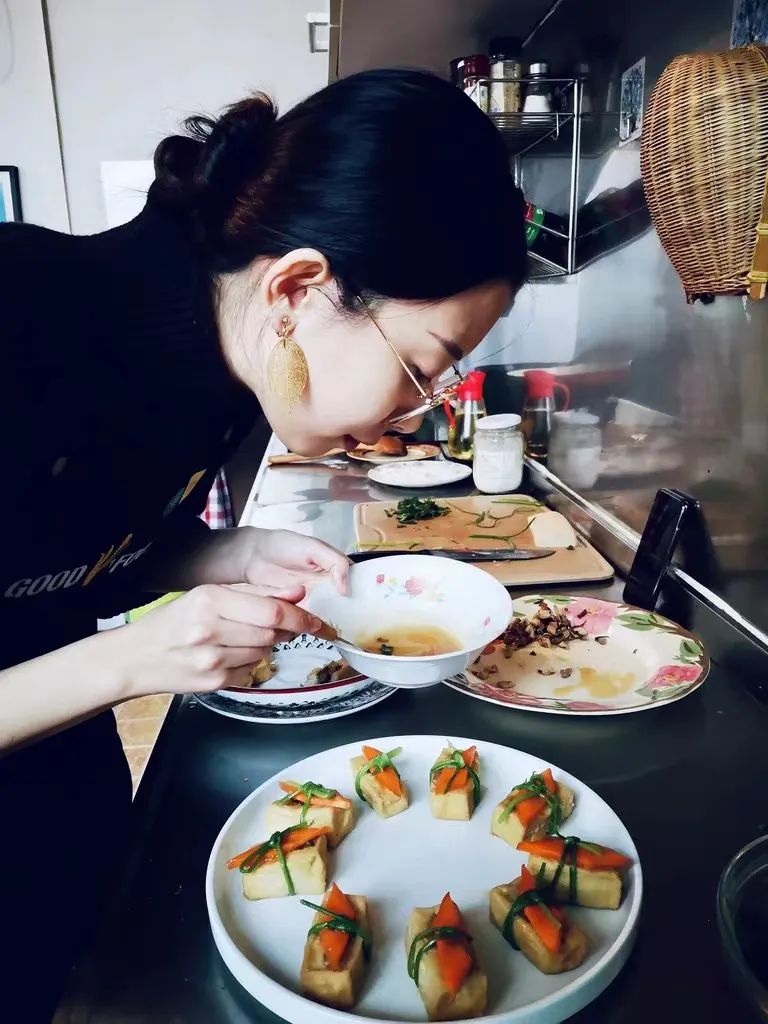How much do you know about the "Four Great King Kong" on the tip of the tongue?
Author:China Food News Agency Rong Me Time:2022.07.16
Preface
The people take food as the sky, and food is the material foundation of survival. As the top of the world's three largest culinary kingdoms, my country can see the superb skills and status. There are many foods and troubles. What do you eat every day? "It is always the most headache. Speaking of eating, the wide range of regions in my country is rich in products, and different winds and winds are different in ten miles. In fact, as early as the Spring and Autumn Period and the Warring States Period, the flavor of the north -south dishes showed differences. In the Tang and Song dynasties, the north and south form a system. Lucai, Sichuan cuisine, Cantonese cuisine and Huaiyang cuisine have become the most influential local dishes.
After the reform and opening up, there are hundreds of flowers in my country, and once formed eight, twelve, and even twenty -four major cuisines. Although there are more vegetables, they have evolved and innovated on the basis of the traditional four major cuisines. Today, let's take a look together, how much is accustomed to "eating"!
Fire is in Shandong -the earliest dishes that are formed
The hometown of vegetables and the hometown of Confucius and Mencius
Shandong has a mild climate and rich landforms. It has a long history and excellent variety. It is known as "one of the three major vegetable gardens in the world". With the unique material conditions, coupled with the ears of Confucian schools such as Confucius, make the spirit of "not tired of eating" for more than 2000 years. Small cuisine. When it comes to Lu cuisine, they all say that one side of the soil and water raises one person, and the folk customs and folk customs are full of dishes and affordable dishes. Puci, hibiscus chicken slices, green onions and sea cucumbers, sweet and sour Yellow River carp and so on.

Classic dishes hibiscus chicken slices
Lu cuisine has a great impact on Chinese cuisine. If the Confucian school has laid the aesthetic orientation of fine, neutralizing, and healthy diet, then the original cooking techniques such as steaming, cooking, and fried in Volkswagen laid the large framework for my country's cooking techniques, and Lu Cai paid great attention to the use of the use of heat. Essence Because Shandong is located along the coast, Lu Cai pays attention to the salt and freshness, and the soup is green. The green onion is a specialty of Shandong, especially the chicken legs, so it is used more on the dishes and has a strong smell of onion.
Lucai nutrition lies in the broth
Familiar with soup and seasoning with soup is an important reason why Lu cuisine can sit firmly in the four major cuisines. Shandong is relying on the sea. The rich seafood provides material support for making soup. In the past that lacks condiments, good soup is the prerequisite for good dishes. Seasoning with soup can not only make the dishes delicious, but also bring the nutrients in the soup into the dish, thereby enhancing the health effect of the dishes.
The taste is in Sichuan -the sweet and spicy factions
A cuisine changed by pepper
Sichuan cuisine originated in the Shu Kingdom during the Spring and Autumn Period and the Warring States Period, which is the owner of the Sanxingdui site in which we well known. At the beginning, Sichuan cuisine was "no taste, and it was treasured", and it gradually formed an independent cuisine in the Song Dynasty. The "spices" used by Sichuan cuisine are pepper pepper and Shu Jiang, so the dishes are not spicy. In the Ming and Qing Dynasties, with the frequent foreign trade exchanges, Sichuan cuisine further developed, pepper began to be introduced into my country, and was widely used in cooking. In ancient times, in ancient times, Sichuan cuisine is not spicy and slightly sweet. Modern Sichuan cuisine is spicy. This is a watershed by Sichuan cuisine. Sichuan cuisine is dominated by home -cooked dishes, and most of the ingredients are daily flavor. One dishes, one -piece and hundred dishes, and the flavors are changed like fish fragrance, home, spicy, red oil and strange flavor. Representatives include boiled meat slices, returning meat, Gongbao Chicken, husband and wife slices, Mapo tofu and so on.

Classic dishes return meat

Classic vegetable sauerkraut fish
Kaishui cabbage is the authentic name of Sichuan cuisine
According to legend, Kaishui cabbage was created by Huang Jinglin, the kitchen of Sichuan cuisine. It is said that at that time Cixi believed that "Sichuan cuisine would only be spicy, vulgar and rustic." In order to break the rumors, he opened the first place to create the best of this dish, and finally swept the Sichuan cuisine for hundreds of years. And this "boiling water" is not ordinary water, but the old hens and other umami materials, stew for at least 4 hours, and then use chicken milk mud to clear it, and finally turn into a clear and bottomed high -grade soup. It can be described as fragrance. It is no wonder that the style of Sichuan cuisine has changed the style of Sichuan cuisine. No wonder it will be praised by Empress Dowager Cixi.
The health of Sichuan cuisine lies in dampness
Sichuan cuisine has a heavy taste. Due to regional reasons, it is heavy for moisture. Eat more pepper and pepper is good for the body. However, if it is a dry climate in the north, it is easy to cause fire. In addition, people with gastric ulcers and intestinal diseases should eat less spicy Sichuan cuisine.
Summary of consumption
Sichuan cuisine is spicy and oily. Therefore, when eating Sichuan cuisine, choose more ingredients such as white radish and black fungus and eat it with food. The drinks can choose sour plum soup to reduce the spicy food. The adverse effects of vitamin C's fruits and spicy taste.
It is expected that in Guangdong -the West to know Chinese food window
Diners are spread at home and abroad
Cantonese cuisine has a high reputation and status internationally. This is because Guangdong ’s overseas Chinese accounted for 60 % of the country, so countries around the world represented Chinese food with Cantonese cuisine. The formation of Cantonese cuisine is related to the geographical location of Guangdong, rich in products and unique diet. It is different from the domestic heavy taste cuisine. It pays attention to the original taste and pursue the umami taste of food. The characteristics of Cantonese cuisine are both harvesting and attracting the length of other cuisines, and the characteristics of Southeast Asia. After continuous improvement and innovation, it has become a group. Cantonese cuisine's raw materials can be chosen in the sky, climbing on the ground, and water swimming in the water, and there are strict requirements for knives, fire, and utensils. Representative dishes include white -cut chicken, dried fried Niuhe, Guangdong morning tea and so on.

Classic noodles Cantonese -style burning
The essence of Cantonese cuisine lies in health
When making dishes, Master Cantonese cuisine shows the taste of the ingredients as much as possible to ensure the original taste of the ingredients. Cantonese cuisine likes to cook soup and drink soup, less oil, less salt and low sugar. The dishes are similar to Japanese cuisine. Not only are there not only special seasonal dishes, but also a variety of dietary and health dishes. According to modern scientific research, eating light foods all year round can help health and reduce the incidence of cardiovascular and cerebrovascular diseases.
Recommended summer soup: preserved egg bean seedlings soup
300 grams of pea seedlings, 1 shell eggs, 150 grams of lean meat, 1000 ml of water and 5 slices of ginger in the pot, boil on high heat, add bean seedlings, pork lean meat slices, roll and add preserved eggs, pork, pork, pork, pork, pork, pork Put the appropriate amount of salt and a little peanut oil after being cooked. Efficacy of dishes: enhance appetite, clear heat and detoxify, and moisturize the intestines.
The knife is in Jiangsu -make food into art works
Humanities to create a cultural work
The Huaiyang cuisine began in the spring and autumn, in the Sui and Tang dynasties, and flourished in the Ming and Qing dynasties. Huaiyang cuisine is very particular about the knife workers, especially the three knives of Yangzhou, which is well -known in the country, and the knife workers are relatively fine, especially melon carvings. There are many rivers here, and the Yangtze River Grand Canal runs through it. It lays a solid foundation for the long -lasting economic prosperity. The raw materials are mainly fresh, supported by top cooking skills, are elegant in style, pursue the taste, and fresh and peaceful. In addition to the production of Huaiyang cuisine, the noodle No. 4 is not inferior, especially the Soviet -style boat point is high, and the shape of the shapes of all colors is exquisite. Representative dishes include lion heads, big boiled dried shredded, three sets of ducks, squirrel cinnamon fish, etc. The modern national banquet is mainly based on Huaiyang cuisine. The reason is that they are exquisite and fine, the other is the simple ingredients, and the third is the moderate taste. Judging from the process of making dishes in Huaiyang cuisine, it is rich in changes, rich imagination, paying attention to charm, and rich Chinese traditional cultural heritage.

Classic Noodle Soviet Ship Point

Classic Noodle Soviet Ship Point

Huaiyang Cold Plate Double Fighting
The skills of Huaiyang cuisine lies in absorption
It can be seen from the ingredients of Huaiyang cuisine. Huaiyang cuisine is very particular about workmanship. Whether it is the name of the dish or matching, it is refreshing. In addition, Huaiyang cuisine also pays great attention to the distribution of raw materials, such as Huangya, the back of the catfish is used to make a large roasted saddling bridge. The cattail tail is used to make a tiger tail. While Huaiyang cuisine is delicious, it also pays great attention to the nutritional absorption of ingredients.
Summarize
"Fire is in Shandong, Swords in Jiangsu, Weifang in Sichuan, and omitable in Guangdong" vividly expressed the characteristics of the four traditional cuisines in my country. With the successful selection of national non -heritage last year, we also believe that "the deliciousness on the tip of the tongue" will continue to carry forward.
(Author: Zhang Shishun, Gaochun Secondary Professional School in Jiangsu Province)
- END -
The 4 "conscience" liquor in my country is full of wine, but it is ignored because of the humble packaging.

The 4 conscience liquor in my country is full of wine, but it is ignored because o...
In the 7th year of vegetarian food, she cooks happiness with more than 600 dishes

At the moment of the epidemic, after the resumption of work, people are still anxi...